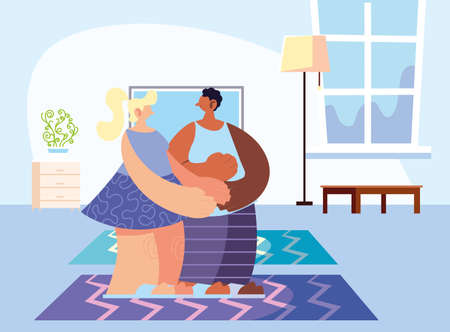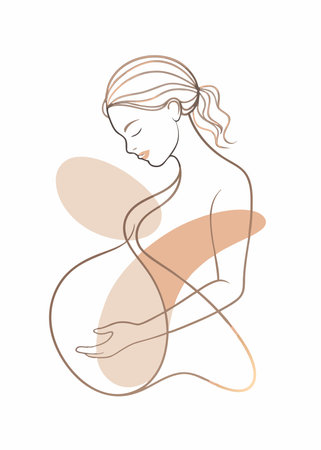Understanding Pelvic Floor Changes After Childbirth
Pregnancy and childbirth bring incredible changes to a woman’s body, especially the pelvic floor. The pelvic floor is a group of muscles and tissues that support your uterus, bladder, and bowels. During pregnancy, these muscles stretch to accommodate your growing baby and prepare for delivery. Whether you have a vaginal birth or a C-section, the process can weaken or strain the pelvic floor muscles. This is completely normal, but it’s important to understand why these changes matter. A healthy pelvic floor helps control bladder and bowel function, supports core stability, and even plays a role in sexual wellness. If left unchecked, weakened pelvic floor muscles can lead to issues like urinary incontinence, pelvic organ prolapse, or ongoing back pain. Recognizing what happens to your pelvic floor during and after childbirth is the first step toward lifelong health and confidence.
2. Spotting the Signs of Pelvic Floor Issues
After giving birth, many women experience changes in their pelvic floor health, but it’s not always easy to know what’s normal and what could signal a problem. Recognizing the signs early can help you get the right support and avoid long-term discomfort. Some of the most common symptoms of pelvic floor issues include urinary or fecal incontinence, a persistent feeling of pelvic heaviness, pain during intimacy, and general discomfort in the pelvic region. If you notice any unusual bulging or pressure, especially when standing or lifting, it may also be a sign that your pelvic floor muscles need attention. The table below summarizes typical symptoms you might encounter postpartum:
| Symptom | What You Might Notice |
|---|---|
| Incontinence | Leaking urine when laughing, sneezing, coughing, or exercising |
| Pelvic Heaviness | Sensation of something “falling out” or dragging in your pelvis |
| Discomfort/Pain | Aching, soreness, or pain in the lower abdomen or pelvic area |
| Pain During Sex | Discomfort or sharp pain during intercourse |
| Bulging Sensation | Feeling or seeing a bulge at the vaginal opening |
If you’re experiencing any of these symptoms after childbirth, know that you’re not alone—these are common issues for new moms in the United States. However, if symptoms persist or interfere with your daily life, consider reaching out to a healthcare provider who specializes in women’s health. Early intervention and targeted exercises can make a significant difference in your recovery and overall well-being.

3. Effective Pelvic Floor Exercises for New Moms
After childbirth, your pelvic floor muscles need gentle yet effective strengthening to support your recovery and overall well-being. Fortunately, you don’t need any fancy equipment or a gym membership—many of the most effective exercises can be done right at home. Here are some proven moves every new mom should know:
Kegels: The Foundation of Pelvic Floor Strength
Kegel exercises are the gold standard when it comes to rebuilding pelvic floor strength. To do a Kegel, simply contract the muscles you would use to stop the flow of urine. Hold this contraction for three to five seconds, then relax for an equal amount of time. Aim for 10-15 repetitions, two to three times daily. Consistency is key, and you can discreetly practice Kegels anywhere—while watching TV, sitting in traffic, or even nursing your baby.
Bridges: Building Core and Glute Support
Bridges not only strengthen your glutes but also engage your pelvic floor muscles and core. Lie on your back with knees bent and feet flat on the floor, hip-width apart. Press through your heels to lift your hips off the ground while squeezing your glutes and tightening your pelvic floor. Hold for a few seconds at the top before lowering down slowly. Repeat 10-12 times, focusing on controlled movement rather than speed.
Quick Tips for Safe Exercise
- Breathe normally—don’t hold your breath during exercises.
- If you feel pain or discomfort, stop and consult your healthcare provider.
- Start slow and gradually increase repetitions as you regain strength.
Why Consistency Matters
Doing these simple exercises regularly can make a big difference in how quickly and effectively you recover after childbirth. They help prevent issues like incontinence and promote better core stability, making everyday activities more comfortable. Remember, every mom’s recovery journey is unique—listen to your body and celebrate small milestones along the way.
4. Tips for Healing and Recovery
Recovering from childbirth is a unique journey for every woman, especially when it comes to pelvic floor health. Taking the right steps can make a significant difference in how you heal, manage discomfort, and regain strength. Here are practical tips to support your healing process:
Pain Management Strategies
Managing pain after childbirth is important for comfort and mobility. Consider these options:
| Pain Relief Method | Description |
|---|---|
| Ice Packs | Apply ice packs wrapped in a towel to the perineal area for 10-20 minutes several times a day to reduce swelling and discomfort. |
| Sitz Baths | Sit in warm water for 15-20 minutes to soothe soreness and promote healing. |
| Over-the-Counter Pain Relievers | Medications like acetaminophen or ibuprofen can help manage pain, but always check with your healthcare provider first. |
Supporting Healing
- Rest Whenever Possible: Sleep may be hard to come by with a newborn, but taking short naps or resting when your baby sleeps helps your body repair itself.
- Stay Hydrated and Eat Well: Proper nutrition and hydration fuel recovery and maintain tissue health.
- Avoid Heavy Lifting: Steer clear of lifting anything heavier than your baby in the first few weeks to prevent strain on healing muscles.
When to Take It Easy
Your body needs time to heal after giving birth. Here’s when you should slow down or seek advice:
- If you notice increased bleeding, new pain, or feel overly fatigued, take a step back from physical activity and rest more.
- If pelvic floor exercises cause pain or discomfort, stop and consult your healthcare provider before resuming.
Warning Signs Not to Ignore
| Symptom | Action |
|---|---|
| Severe pain or pressure in the pelvis | Contact your healthcare provider immediately |
| Fever or chills | This could indicate infection; seek medical attention promptly |
| Unusual discharge or heavy bleeding | Report these symptoms as soon as possible |
Remember:
Your postpartum recovery is not a race—listen to your body, celebrate small milestones, and don’t hesitate to ask for help from family, friends, or professionals as you heal.
5. When to Seek Professional Help
Its completely normal to have questions and concerns about your pelvic floor health after childbirth, but there are times when you should reach out to a professional for support. While mild discomfort and some changes in bladder control are common initially, certain symptoms may indicate that its time to talk to your healthcare provider or see a pelvic health physical therapist.
Signs You Shouldnt Ignore
If you experience persistent pain in your pelvic area, ongoing urinary or fecal incontinence, a feeling of heaviness or bulging in your vaginal area, or pain during sex that doesnt improve, these could be signs of pelvic floor dysfunction. Dont wait for these symptoms to resolve on their own—early intervention can make a big difference in your recovery.
The Role of Pelvic Health Physical Therapists
Pelvic health physical therapists are specially trained to help with issues related to pelvic floor weakness, overactivity, or injury. They can provide personalized exercise plans, hands-on therapies, and education tailored to your unique needs after childbirth. If youre unsure whether your symptoms are “normal,” scheduling an assessment can offer peace of mind and guidance.
Advocating for Your Health
Remember, every body is different and healing timelines vary. If something feels off or youre struggling with daily activities because of pelvic floor issues, dont hesitate to speak up. Your well-being matters, and seeking help is a sign of strength—not weakness. Trust your instincts and advocate for the care you deserve as you navigate postpartum recovery.
6. Building a Supportive Postpartum Community
Taking care of your pelvic floor after childbirth isn’t just a physical journey—it’s an emotional one, too. Connecting with other moms who are navigating similar experiences can be incredibly uplifting and provide much-needed encouragement. In the U.S., there are many ways to tap into supportive postpartum communities, both in-person and online, to help you feel less alone as you heal.
Explore Local Resources
Start by checking out resources at your hospital, OB-GYN office, or local community center. Many places offer postpartum support groups, new mom classes, or even specialized workshops focused on pelvic floor health. These gatherings can introduce you to healthcare professionals and other mothers who truly understand what you’re going through.
Find Online Support Groups
If attending in-person meetings isn’t possible, the internet offers a wealth of options. Popular platforms like Facebook, Reddit, and even dedicated apps have private groups where moms openly discuss pelvic floor recovery tips, share their struggles, and celebrate milestones together. Search for groups focused on postpartum health or pelvic floor wellness—many American moms find genuine friendships and practical advice this way.
Connect Through Fitness and Wellness Classes
Many gyms and studios across the U.S. offer postnatal yoga, Pilates, or fitness classes tailored for new moms. These group settings not only provide expert guidance on safe exercises but also foster connections with others who are prioritizing their well-being.
Lean On Your Village
Never hesitate to reach out to family members, friends, or neighbors for support—whether it’s babysitting during your exercise time or simply lending a listening ear. Remember, building a strong support system is vital for both your physical recovery and emotional health as you nurture your pelvic floor post-childbirth.


